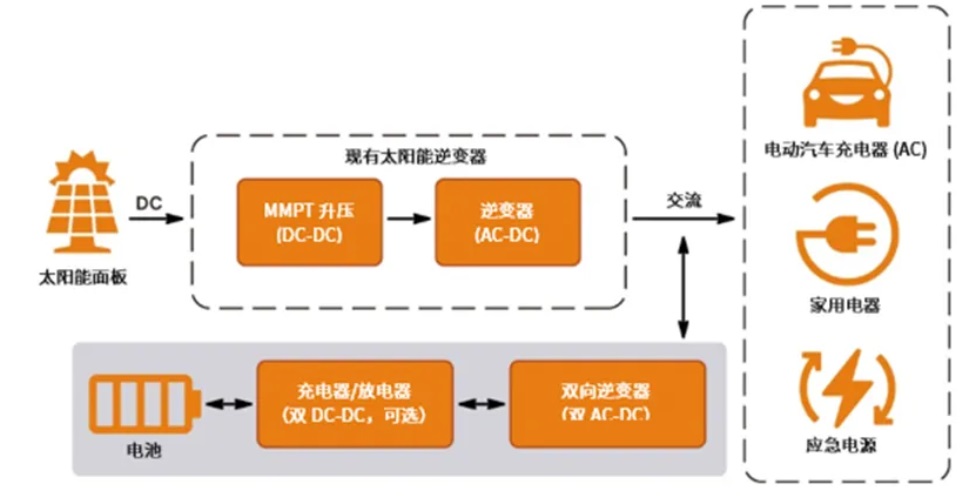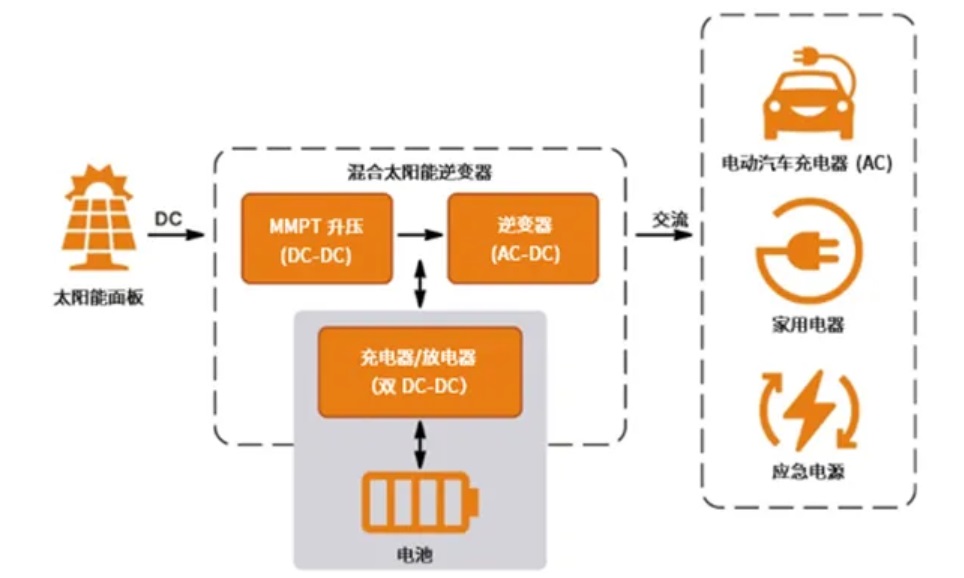About energy storage system design, you must know these dry details
Time:2024-06-19
Views:34
Energy storage systems play a key role in building a low-carbon world and are one of the most dynamic industrial applications today. The reasons mainly include the active policies led by countries to decarbonize goals, the demand for renewable energy storage and control such as photovoltaic power generation in the rapid development of new energy applications, and the continuous reduction of the cost of lithium-ion batteries. Energy storage systems are closely related to photovoltaic systems and electric vehicle charging stations in terms of application, and they have similarities in hardware design and component selection. This first part of a comprehensive guide to energy storage systems and their markets, as well as the advanced products and solutions offered by onsemi, will focus on the energy storage market overview and system design framework.
System objective
Energy storage systems (ESS) is a widely studied application area that can efficiently store electricity generated by various power generation methods such as coal, nuclear, wind and photovoltaic power generation in a variety of ways. For example, electrochemical energy storage (battery), mechanical energy storage (compressed air), thermal energy storage (molten salt) and so on. In this guide, we will focus on battery energy storage systems that are connected to photovoltaic inverter systems.
Battery energy storage systems (BESS) are widely used in both residential and commercial scenarios. In residential applications, BESS acts as a backup power source to prevent unexpected power outages and save on electricity bills by shifting power from low-priced to high-priced periods. In larger commercial applications, BESS is able to efficiently store and manage free clean energy generated by photovoltaic inverters, resulting in low carbon emissions. Another major application of BESS is the ability to reduce the pressure on the power grid caused by the increasing demand for electric vehicle charging.
As the main component of electrochemical energy storage system, lithium-ion battery has the characteristics of high power/energy density, high cycle efficiency, small size, easy to expand and so on. After more than 30 years of commercial development, lithium-ion battery technology is relatively mature and has become a reliable and low-cost solution. It can be said that the continuous decline in the cost of lithium-ion batteries has strongly promoted the development of the energy storage industry.
Market information and outlook
1 Growing demand for battery energy storage systems
According to the World Energy Outlook 2023, the global energy model Stated Policies Scenario shows that the total capacity of battery storage will grow from 45 terawatt hours (TWh) in 2022 to 552 TWH in 2030. The compound annual growth rate (CAGR) was 37%.
On the other hand, according to Bloomberg New Energy Finance (Bloomberg NEF) data show that the price of lithium-ion battery cells has fallen to an all-time low of $107 per kilowatt-hour, compared to $535 / kilowatt-hour in 2013, a reduction of about 80%, which has largely promoted the development of battery energy storage system market. At the same time, the positive impact of renewable energy cannot be ignored, with the International Energy Agency (IEA) predicting that more than 800 gigawatts (GW) of photovoltaic infrastructure will be added by 2030.
2 Higher power and voltage
High-power chargers are usually used in commercial situations, and battery energy storage systems are usually used in conjunction with photovoltaic inverter systems. At present, photovoltaic inverters with a rated voltage of 1500V have entered mass production and been put into use. Therefore, the DC voltage of the power conversion system (PCS) needs to be raised to the same level. In high-power conversion applications, such as photovoltaic inverters and electric vehicle DC charging piles, high voltage is a clear trend because high voltage can bring lower current at the same output power, reducing system losses and cable diameter. However, high-voltage systems also pose challenges for components. In a 1500V system, a power device with a rated voltage of 1200 V in a multilevel circuit is generally preferred, or a silicon carbide MOSFET with a rated voltage of 2000 V in a two-level topology. In addition, safety and electromagnetic interference issues caused by higher voltages and higher power must be carefully considered.
3 Distributed systems and intelligent systems
A new generation of distributed battery energy storage systems can solve the shortcomings of centralized systems. When multiple battery packs are connected in parallel, the imbalance between battery packs is easy to cause some battery packs to be overused for a long time, and ultimately affect the overall performance of the battery system. In contrast, distributed systems can achieve decentralized management of subsystems, make maintenance easier, and improve the service life of the system, thereby increasing the number of battery charging cycles. Similarly, photovoltaic inverter systems also have these characteristics and trends.
The energy management system (EMS), which is the command center responsible for control and decision-making, and at the same time monitors system failures during operation, is an important part of the battery energy storage system. The content of energy management system in commercial battery energy storage system is very complex, which requires real-time data acquisition and control. It controls each node according to different strategies and instructions of the power grid dispatching center, such as peak cutting and valley filling, photovoltaic system access, etc. Soon, big data analytics will be integrated to predict health, reduce manual administration, and maximize efficiency.



Centralized and distributed solutions
4 Ecosystem integration of battery energy storage system and photovoltaic inverter system
The development of DC charging stations has brought challenges to the local power grid. Potential problems include the impact on the grid of a large number of charging devices operating at the same time, the harmonic impact of low power factor devices or no-load devices on the grid, and local transformer capacity limitations. In the business case, connecting photovoltaic inverter systems and battery energy storage systems becomes critical. Photovoltaic inverters can share part of the power load with the grid, and battery energy storage systems are more critical, which can reduce the impact on the grid, achieve energy arbitrage, and reduce user costs. Residential battery storage systems also help reduce peak demand for electricity, thereby saving costs for households. Another feature is that the residential battery energy storage system can be used as a backup power source to provide emergency power in the event of a grid failure.
System implementation


System description
1 Four elements of building a battery energy storage system
The battery energy storage system consists of four parts and is not only suitable for commercial types, but also for residential types. A battery pack consists of cell cells for building a commercial-grade system, while a high-voltage module is integrated into a rack or battery pack to provide higher capacity. Charge and discharge voltages typically range from 50 V to 1100 V, depending on the battery voltage and circuit topology. A battery management system is an electronic system that manages rechargeable batteries to ensure that they operate in a safe operating area (SOA), monitor their working status, calculate and report real-time data, etc., for a longer working life. The power conversion system is another important subsystem for the bidirectional conversion of electrical energy between the battery pack and the grid or load. It largely determines the cost, size and performance of the system. As mentioned earlier, an energy management system is a software-based system of computer-aided tools used by grid operators to monitor, control, and optimize the performance of a power generation or transmission system.
2 AC coupling system and DC coupling system
Battery energy storage systems are currently divided into two categories, namely AC coupled systems and DC coupled systems. The AC-coupled battery energy storage system is a standalone system that can be added to an existing PV/power generation system/grid and is therefore easy to upgrade. However, it requires additional power conversion stages to achieve full charge/discharge, so losses are higher. On the other hand, DC-coupled systems can provide additional energy storage capacity by connecting to a DC bus, and are commonly used in residential hybrid PV inverters. It involves only one DC-DC conversion step, because the DC bus voltage is usually higher, which may present safety or modification challenges that need to be considered in advance when designing the product.

Ac coupled system


Ac coupled system DC coupled system
3 Bidirectional operation
The power conversion stage of the battery energy storage system needs to run bidirectional. Normally, three-phase inverters can operate bidirectionally and can be used as AC-DC converters in reverse mode, reactive mode of the UPS, or brake mode of the motor drive. One important point to emphasize here is that power converters in general, as well as specific topologies, are optimized for one use case and one power flow direction by selecting and resizing switches and diodes. Three-phase inverters used as AC-DC converters in PFC mode are less efficient than optimized AC-DC PFC converters. Even a DC-AC topology designed to be bidirectional will perform better in one direction than the other. Therefore, the most common use cases must be kept in mind. Also, as we have seen, not all topologies can be bidirectional, so choosing the right topology beforehand is an important factor. Read Unmasking the Three-phase Power Factor Correction Topology to learn about three-level technology and the characteristics of three-level PFC circuits.
Silicon carbide products are used in power conversion systems
Compared to IGBTs, silicon carbide (SiC) devices have more advantages in high voltage and high current applications, such as enabling high frequency switching. Although IGBTs are still the first choice in the design of battery energy storage systems, taking into account different switching strategies, the use of silicon carbide devices in some parts can achieve better performance. For example, in A bidirectional inverter using A-NPC, since the internal switch requires a higher switching frequency under a specific switching strategy, a silicon carbide device can be selected in the internal branch to reduce switching losses, while the remaining switches can use a low VCE(SAT) IGBT to keep costs manageable.
|
Disclaimer: This article is transferred from other platforms and does not represent the views and positions of this site. If there is any infringement or objection, please contact us to delete it. thank you! |











